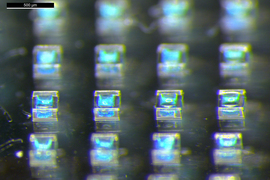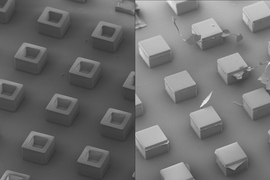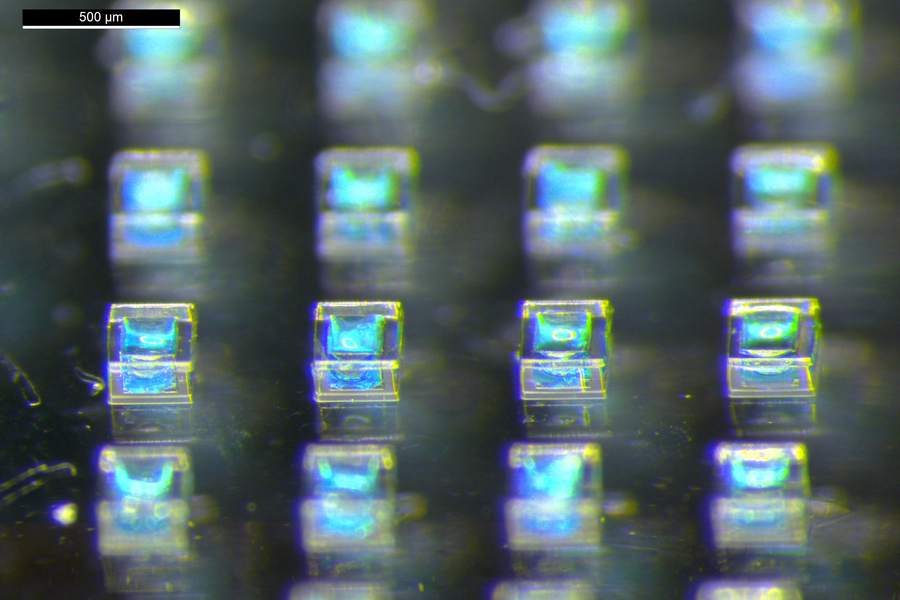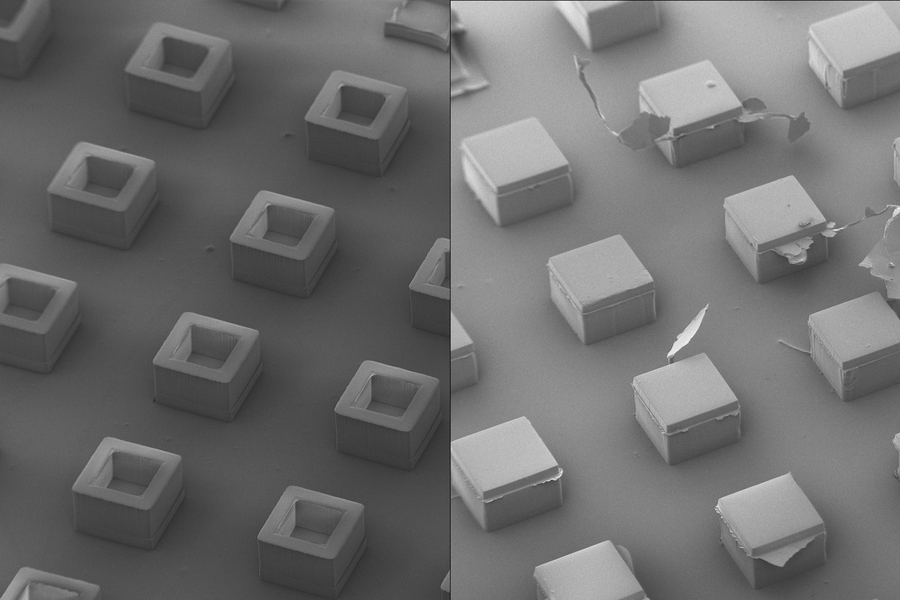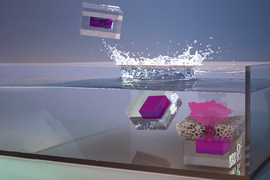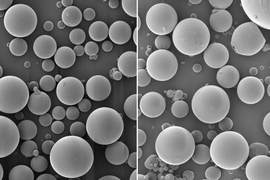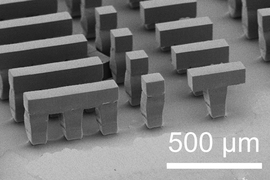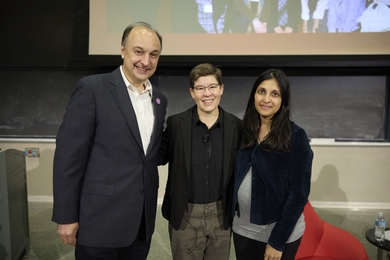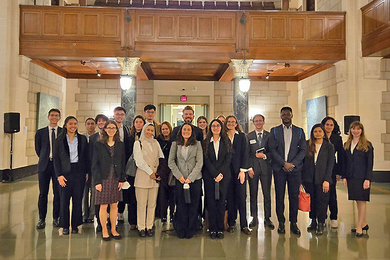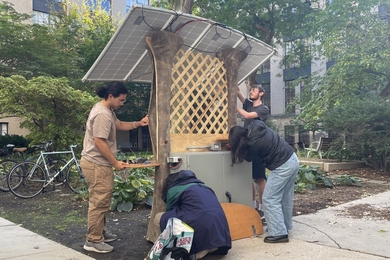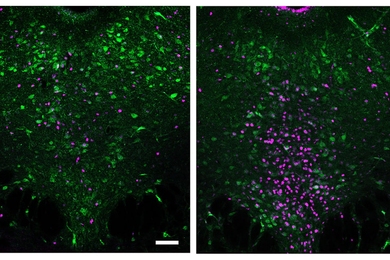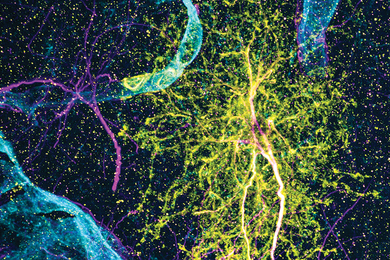Around the world, 20 percent of children are not fully immunized, leading to 1.5 million child deaths each year from diseases that are preventable by vaccination. About half of those underimmunized children received at least one vaccine dose but did not complete the vaccination series, while the rest received no vaccines at all.
To make it easier for children to receive all of their vaccines, MIT researchers are working to develop microparticles that can release their payload weeks or months after being injected. This could lead to vaccines that can be given just once, with several doses that would be released at different time points.
In a study appearing today in the journal Advanced Materials, the researchers showed that they could use these particles to deliver two doses of diphtheria vaccine — one released immediately, and the second two weeks later. Mice that received this vaccine generated as many antibodies as mice that received two separate doses two weeks apart.
The researchers now hope to extend those intervals, which could make the particles useful for delivering childhood vaccines that are given as several doses over a few months, such as the polio vaccine.
“The long-term goal of this work is to develop vaccines that make immunization more accessible — especially for children living in areas where it’s difficult to reach health care facilities. This includes rural regions of the United States as well as parts of the developing world where infrastructure and medical clinics are limited,” says Ana Jaklenec, a principal investigator at MIT’s Koch Institute for Integrative Cancer Research.
Jaklenec and Robert Langer, the David H. Koch Institute Professor at MIT, are the senior authors of the study. Linzixuan (Rhoda) Zhang, an MIT graduate student who recently completed her PhD in chemical engineering, is the paper’s lead author.
Self-boosting vaccines
In recent years, Jaklenec, Langer, and their colleagues have been working on vaccine delivery particles made from a polymer called PLGA. In 2018, they showed they could use these types of particles to deliver two doses of the polio vaccine, which were released about 25 days apart.
One drawback to PLGA is that as the particles slowly break down in the body, the immediate environment can become acidic, which may damage the vaccine contained within the particles.
The MIT team is now working on ways to overcome that issue in PLGA particles and is also exploring alternative materials that would create a less acidic environment. In the new study, led by Zhang, the researchers decided to focus on another type of polymer, known as polyanhydride.
“The goal of this work was to advance the field by exploring new strategies to address key challenges, particularly those related to pH sensitivity and antigen degradation,” Jaklenec says.
Polyanhydrides, biodegradable polymers that Langer developed for drug delivery more than 40 years ago, are very hydrophobic. This means that as the polymers gradually erode inside the body, the breakdown products hardly dissolve in water and generate a much less acidic environment.
Polyanhydrides usually consist of chains of two different monomers that can be assembled in a huge number of possible combinations. For this study, the researchers created a library of 23 polymers, which differed from each other based on the chemical structures of the monomer building blocks and the ratio of the two monomers that went into the final product.
The researchers evaluated these polymers based on their ability to withstand temperatures of at least 104 degrees Fahrenheit (40 degrees Celsius, or slightly above body temperature) and whether they could remain stable throughout the process required to form them into microparticles.
To make the particles, the researchers developed a process called stamped assembly of polymer layers, or SEAL. First, they use silicon molds to form cup-shaped particles that can be filled with the vaccine antigen. Then, a cap made from the same polymer is applied and sealed using heat. Polymers that proved too brittle or didn’t seal completely were eliminated from the pool, leaving six top candidates.
The researchers used those polymers to design particles that would deliver diphtheria vaccine two weeks after injection, and gave them to mice along with vaccine that was released immediately. Four weeks after the initial injection, those mice showed comparable levels of antibodies to mice that received two doses two weeks apart.
Extended release
As part of their study, the researchers also developed a machine-learning model to help them explore the factors that determine how long it takes the particles to degrade once in the body. These factors include the type of monomers that go into the material, the ratio of the monomers, the molecular weight of the polymer, and the loading capacity or how much vaccine can go into the particle.
Using this model, the researchers were able to rapidly evaluate nearly 500 possible particles and predict their release time. They tested several of these particles in controlled buffers and showed that the model’s predictions were accurate.
In future work, this model could also help researchers to develop materials that would release their payload after longer intervals — months or even years. This could make them useful for delivering many childhood vaccines, which require multiple doses over several years.
“If we want to extend this to longer time points, let’s say over a month or even further, we definitely have some ways to do this, such as increasing the molecular weight or the hydrophobicity of the polymer. We can also potentially do some cross-linking. Those are further changes to the chemistry of the polymer to slow down the release kinetics or to extend the retention time of the particle,” Zhang says.
The researchers now hope to explore using these delivery particles for other types of vaccines. The particles could also prove useful for delivering other types of drugs that are sensitive to acidity and need to be given in multiple doses, they say.
“This technology has broad potential for single-injection vaccines, but it could also be adapted to deliver small molecules or other biologics that require durability or multiple doses. Additionally, it can accommodate drugs with pH sensitivities,” Jaklenec says.
The research was funded, in part, by the Koch Institute Support (core) Grant from the National Cancer Institute.
